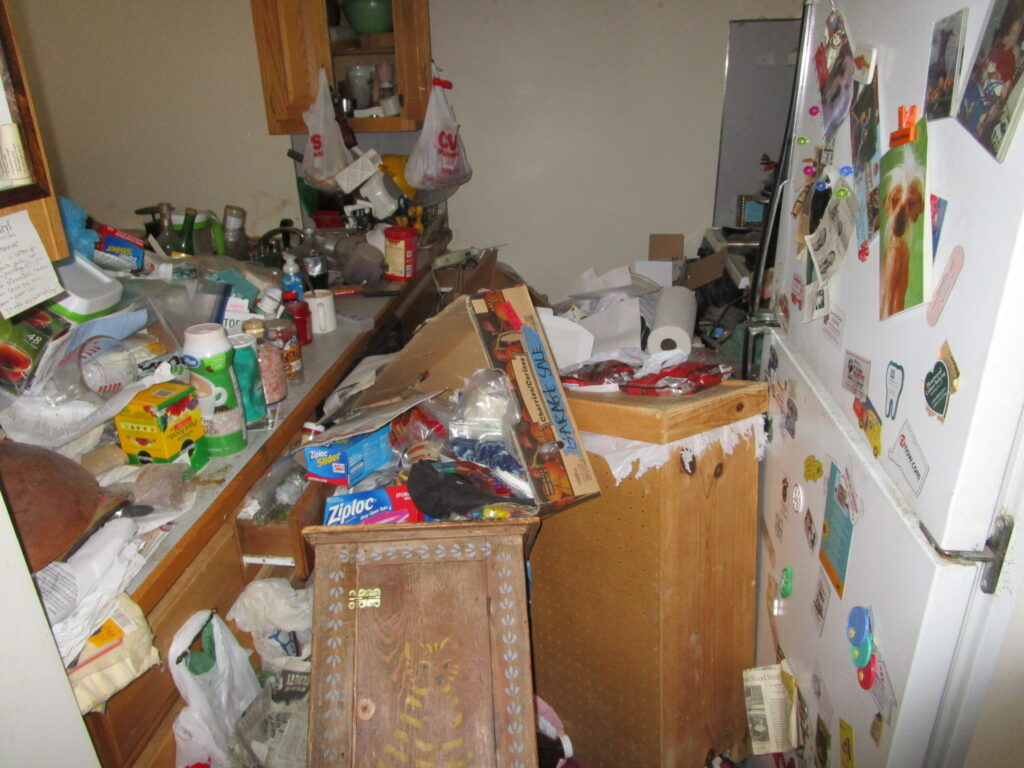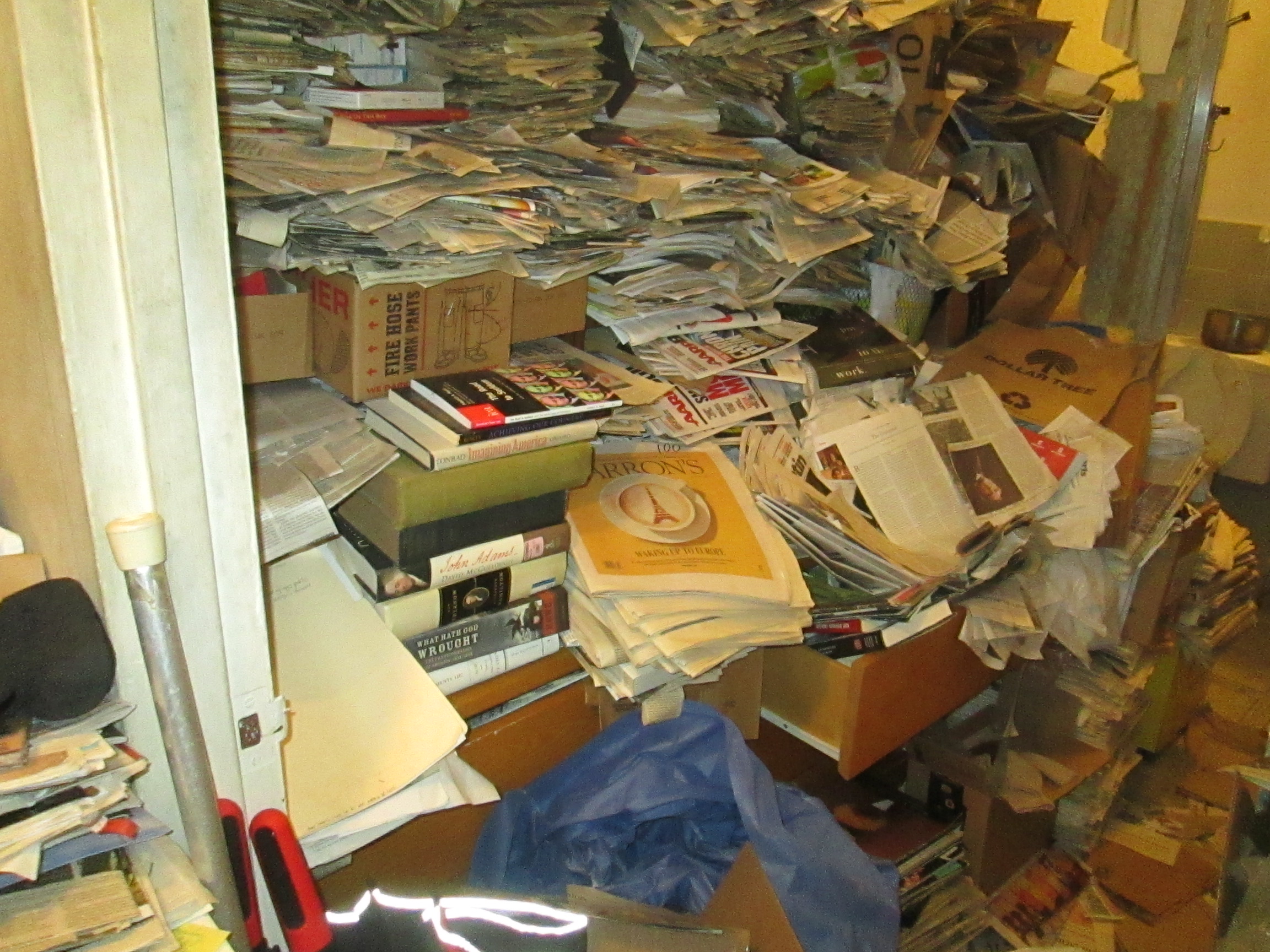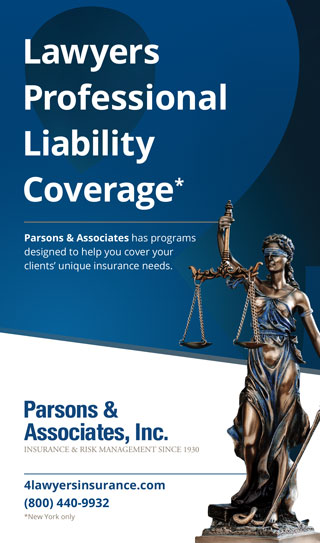The term hoarding can bring some horrific images to mind—mostly due to several television shows on the topic. However, being as it’s TV, and they need drama and the dramatic, what is shown on TV is often some of the worst cases. That doesn’t mean hoarding should be swept under the rug and ignored—especially from an insurance standpoint.
How does hoarding affect insurance, or at least, how one writes for it? In this article, I will touch primarily on insuring contents, which is arguably the largest aspect. Other aspects include: the health and well-being of the occupants, and the health and well-being of the structure. Houses that are stuffed with contents often surpass the load limits the home was designed to handle. They also are a fire hazard, and if the hoarder is living in a multifamily residence (e.g., a condominium or apartment), that safety aspect spreads to include many other lives.
In my experience in dealing with hoarders: They often know what they have, how much of it they have, and they often will increase their contents/personal property coverage voluntarily to make sure their treasures are covered.
I’ve worked on hoarding claims in which a small category 3 water loss (sewage) necessitated the removal of all the contents from the home so that proper mitigation and repairs could be affected. The packing, moving and storage of the contents was well over $200,000. The totaled/nonsalvageable contents were another $150,000. The mitigation and repair costs were less than $75,000 combined.

Understand hoarding
To understand the nuances of writing coverage for a hoarder, one must first understand that hoarding is considered a mental health disorder, and it is often associated with anxiety, depression, OCD and ADHD. While many times hoarding starts early in life and progressively gets worse, sometimes a major life stress event can cause it to flower into an unmanageable situation. One can’t simply say to a hoarder: “Hey, can you clean this stuff up?”
The basics are that hoarding is the compulsive gathering and keeping of items that are not needed. Sometimes this may be clothes, magazines, unopened Amazon purchases and (in worse case situations), what most of us would consider garbage—empty pizza boxes, empty soda bottles and cans, used tissues and used … yes, even worse than that. Animal hoarding can be one of the most distressful, and it’s a topic I won’t get into here.
There are 5 categories/stages of hoarding:
Stage 1: Minimal clutter. While most of our homes would tuck nicely into this area—especially if there are teenagers living on the premises—in terms of the next steps, this is the start. When the clutter doesn’t get sorted and starts to grow, Stage 1 can move up to Stage 2.
Stage 2: Mild clutter. This is when clutter starts to accumulate in areas. Some household systems may be getting neglected. And, many horizontal hard surfaces (e.g., tables, countertops) and some rooms are full of clutter.
Stage 3: Moderate clutter. This is when things sort of cross the threshold into the person needing professional, medical help. Couches, chairs, beds, literally every horizontal surface is being used for storage. Some floor spaces are coming into play and movement through the home may start to get difficult. Some exits may be blocked.
Stage 4: Severe clutter. At this point entire rooms will be filled with contents and totally unusable. The sanitary conditions in the house will be poor at best, most appliances will be in bad shape and may not work correctly. Insect infestations may be present, as well as mold and a general decay of the structure of the home. Movement within the house can be dangerous due to the floor being covered.
Stage 5: Extreme clutter. Generally, the house is unlivable. The person may have a small area in which he or she exists, every room, basement, garage, outbuildings and often the yard have become overridden by the hoard. Moving through the home means climbing over piles. There is probably not a working bathroom, and the HVAC system is inoperable. Wild animals may have gained access to the house, and they may have died in the home. These are the situations that have been televised.
The real (insurance) problem
As the insurance agent, you may have no clue your client is living in a hoarding situation. This can cause some obvious issues, the first being potentially no coverage for a loss due to neglect. There also are the liability issues. What happens if a first responder is injured while responding to an emergency? Or if the insured hoarder is responsible for an issue at a multifamily home?
How do agents find out if their insureds are hoarders? Aside from visiting the home, it’s difficult to know. However, if you have an insured who is consistently raising his or her contents levels, that may be a sign the insured is amassing contents in the home. Many hoarders know they have a lot of stuff and to them, it’s valuable.
If you have an insured who often wants to raise the contents coverage on his or her home, you could always offer to visit the home to help the client assess what he or she has, to make sure the client gets the most benefit from the homeowners policy.
Be prepared
If you are invited over, when you arrive, be prepared for what you may see and smell. As I’ve mentioned, generally hoarders know that they have a lot of stuff, and they’ll probably make an excuse about not being able to clean up in time, or they will tell you they’ve been trying to purge and sort their belongings, but they haven’t been able to get any friends or family to assist them.
You’re not going to able to look at antiques, or individual items and tell if there are any items of real value. However, the hoard itself is a mass that would need to be handled in the event of a home claim (e.g., water, soot, fire, mold).

Value and labor
To make sure they have enough coverage one can’t only think in terms of the physical items within the hoard and their value, but they also must consider the labor necessary to work with the hoarder to sort, wrap, pack, move—possibly clean and store—and move the items back.
The same elements are part of the structural coverage. House coverage is not only based on the market value of the home, but also on the cost of materials and labor to rebuild it after a claim.
The same must be considered when dealing with the contents in someone’s home. One suggestion would be to contact a hoarding clean-up expert—yes, they exist (I happen to be one), and ask for assistance working with the hoarder, if not to clean things up, to at least help you have a better understanding of that situation. They also can assist in assigning a value of the hoard in terms of the labor to handle it.
Another consideration is the effect the hoard may have on the insured’s policy as whole. It is entirely possible that once you (the agent) have confirmed the situation, you may not be able to insure the structure and contents. This could be used as an impetus to help the hoarder get some help—both psychologically and physically—with dispersing the actual hoard.
I’m not sure if there is a legal statute that mandates that a licensed professional insurance agent reports an issue that affects the safety of the homeowner or other homeowners/renters in a multifamily situation. And, reporting a hoarding condition may cause a rift between you and your client.
Obviously, there is a lot to consider when insuring a hoarder. Fortunately, there is a lot of support available to walk one through the potential pitfalls.

David Brill
Dave Brill has been in the restoration industry for nearly 30 years. He started as a basic technician working on fire and water losses for one of Connecticut’s first full-service restoration companies. He received his Institute of Inspection Cleaning and Restoration Certification’s in fire restoration, odor removal, specialty carpet cleaning and electronic restoration. Additionally, Brill is a level 3 Xactimate estimator and a certified hoarding cleanup professional. Since 2020, he has worked for PaulDavis New Haven County and Shoreline East, where he started a contents department that grew from $300,000 in revenue to over $1 million in two years, and he works in the company’s marketing department.





